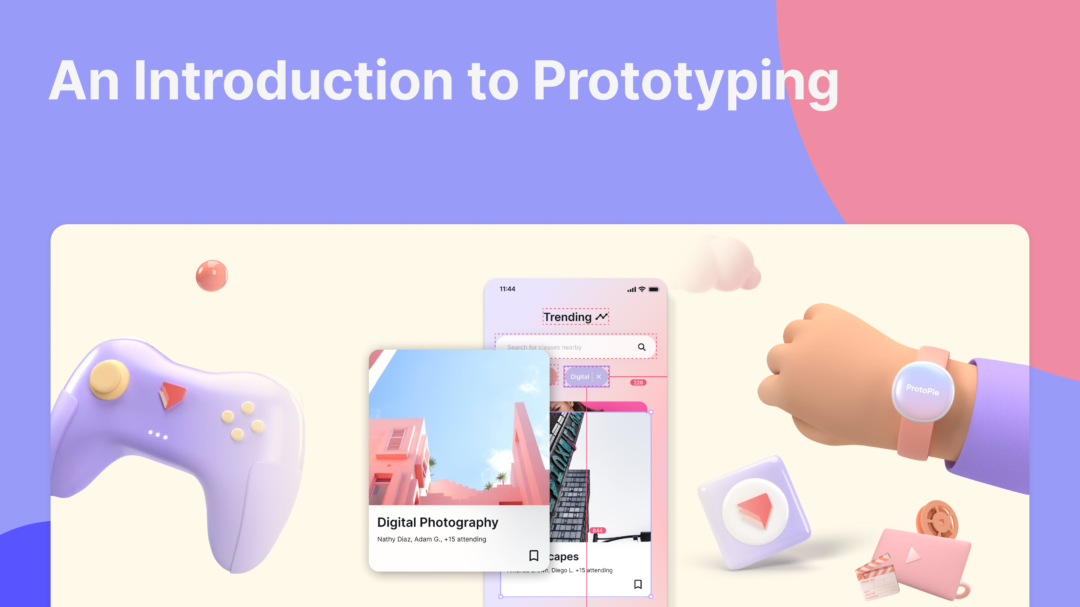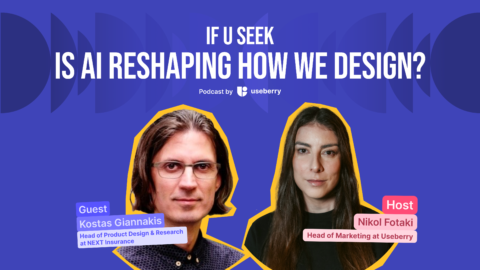Prototyping is arguably the most important stage of the design journey. This experimental process allows teams to turn their ideas into tangible forms, creating the simplest possible execution of a design concept. In other words, they can transform paper-based plans into tangible digital prototypes.
Prototyping is crucial because it bridges the gap between ideas and products, assumptions and insights. Ideas might sound great on paper but designers don’t know if they’re going to work until they create their first prototype. Ideas can be discussed and debated — but prototypes can be experienced.
By building prototypes, teams can test early and often. This allows them to understand their proposed product designs in more detail, gain invaluable user feedback, iterate, and optimize the end product at the earliest possible stage.
Why every industry needs to prototype
Prototyping is a critical stage of the design process, no matter which industry you operate in. Consider the following examples:
Automotive prototyping
Today’s cars are far more feature-rich than their predecessors, with multiple displays and a myriad of possible interactions. Imagine you want to create an in-car voice assistant. By creating a prototype, you can ensure the assistant works properly, that the voice sensor interacts properly with all necessary hardware and software components, and that the car UX is as you intend.
Smartwatch prototyping
You can’t replicate a smartwatch’s features on paper, no matter how hard you try. This is where prototyping comes in. Design teams can create genuine interactions on actual smartwatches, on your wrist. Experience the full effect before tweaking where necessary.
Game prototyping
Creating a game from scratch can be a long and incredibly expensive process. It’s therefore crucial that designers test out their assumptions before they go ahead and build fully-fledged games. By creating prototypes, they can experience the gameplay for themselves and can make any modifications as soon as possible.
Mobile & Tablet
Mobile and tablet designers need to know how devices feel in their hands — in other words, they need to gain the full user experience. Prototypes allow design teams to test out their assumptions. They can identify which aspects of the device function as intended, which features need more work, and so on. Most importantly, they can put themselves in their users’ shoes.
TV Screen
Designers can adopt a use-case-driven approach when constructing screen-based prototypes, creating a sequence of screens for each user’s use case. They can also implement graph structure and related concepts to make the scenarios richer and gain more powerful feedback.
ProtoPie for prototyping
ProtoPie is the easiest tool to turn your interaction design ideas into hyper-realistic prototypes. Users can create a wide range of interactive prototypes spanning the automotive, smartwatch, game, mobile, and tv industries (among others).
ProtoPie is entirely code-free, yet it offers the same functionality and features of code-based alternatives currently on the market. Anybody can create prototypes on ProtoPie. Our simple conceptual model (Object – Trigger – Response) underpins the entire tool. Once you understand how this model works, you can create hyper-realistic interactive prototypes in a matter of minutes, using variables, conditions, sensors, and more.
Best of all, ProtoPie was built with collaboration in mind. Design teams can collaborate on prototypes via the cloud and hand over precise instructions to developers using interaction recipes. ProtoPie helps designers turn their ideas into reality before effortlessly sharing this with the rest of their organization.
ProtoPie + Useberry Integration
The ProtoPie + Useberry workflow means that prototypes created within ProtoPie play nicely with Useberry’s unmoderated user tests. You can therefore spend more time generating insights, instead of trying to get your prototype to work with Useberry.
With Useberry’s remote user testing capabilities, you can quickly gain valuable insights to optimize and improve your design process. These insights include heatmaps, video recordings, user flows, and visit time, among others. Find out more about testing ProtoPie prototypes in Useberry here.
Get started today
It’s time you embraced hyper-realistic prototyping.




